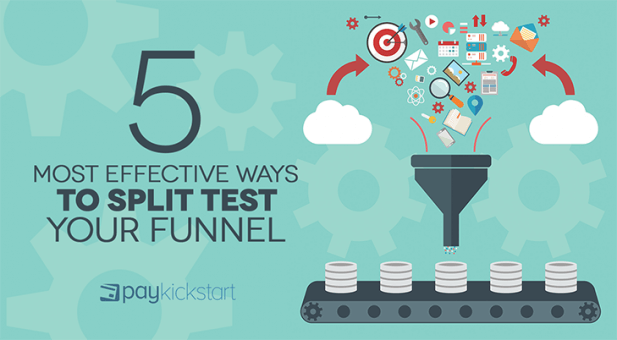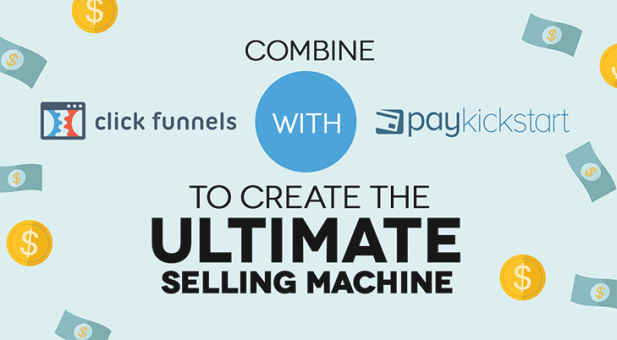Subscription growth hack (by PayKickstart)
Facebook Group - 3,932 members
Visit Group
Split testing, or A/B testing as it is often called, is one of the most effective ways to increase the performance of your various marketing campaigns and ultimately your entire sales funnel. You can run an A/B test to measure the performance of many different parts of your sales funnel, including your email campaigns, landing pages, ad campaigns and more. And a few hours of work could lead to big boosts in conversions, revenue, and more.
You can use split-testing to optimize your sales funnel.
So what is split testing anyways? Basically, you will test two or more different versions of your campaign or asset. Let’s say you want to A/B test your landing page. You might set up one landing page with a call-to-action (CTA) that says “Click here to learn how to increase your ecommerce sales!” and another CTA that states “Click Here to Enjoy a Free Trial!” then measure which one performs better.
Ideally, when you A/B test something, you change only one thing between the two versions. So when split testing the call to action, you won’t change around images, buttons, or anything else. Your goal is to determine exactly what is causing performance to increase (or decrease).
Example of a simple A/B test. Notice the different click buttons.
If you change multiple elements at once, it’ll be hard (if not impossible) to determine which one is causing the change. By testing only one thing at a time, you can hone in on changes that are making a difference.
However, in order to determine whether something is having an impact or not, you need to gather a lot of data. We’re not talking about dozens of clicks, but instead thousands or even tens of thousands. If you test every individual word change and element individually, it can be difficult to collect enough data.
Let’s say you want to try a new CTA and you want to know the impact of this CTA and button throughout your entire sales funnel. You can do this with a multi-page A/B test. You will simply apply the new CTA at every relevant stage of your funnel.
The orange “Get Started for Free” button is an example of a CTA from PayKickstart’s site.
Most sales funnels feature multiple pages, and most pages will offer you an opportunity to use your CTA. You can set up two funnels, one with the old CTA, another with the new CTA, and then test the performance of each sales funnel on the whole.
Customers are going to progress through each phase of your funnel. You can split test different steps of this funnel to see how each step is performing. For example, you could test one version of a landing page. Then when the customer clicks on the first link and goes to the product info page, you can A/B test that product info page as well.
Next, the customer might check out with the product. Here again, you can A/B test the shopping cart to see what features, tools, or language is working best. In this case, a single customer interaction allows you to test multiple things at once. However, since you are A/B testing individual pages against one another, you can still hone in on what is producing results and what’s not.
If you’re thinking about a huge shake-up, say changing your entire marketing language or the overall feel of your brand, testing simply a logo change or a call-to-action might not be enough. Instead, you can A/B test your entire approach to see if the radical shake-up will produce results.
So if you design a whole new website with a more modern look and more aggressive copy, you could A/B test that against your old website. If results are negative, your branding shift might not work. In this case, you may want to try to hone in on what’s causing the drop in performance.
Check out the redesigns to Yahoo!’s homepage. It’d be hard to test each individual element.
So maybe you go back and adjust your calls-to-action to make them less aggressive. At the same time, you could test your new, modern looking website with less aggressive language. If the results are positive and you start producing more conversions, now you have good reason to believe that the updated website is a boon but the aggressive language is not.
Want to test a number of variables at once? It is possible, especially if you have a lot of traffic. Keep in mind that the testing itself might not be quite as accurate as A/B testing a single variable. However, let’s be honest, if you want to test a large number of individual variables, you may not have enough time to A/B test every single one.
IMDb changed a lot of elements in the two above websites. It would take a long time to test each variable separately.
With multivariate testing, you can swap a number of variables. The trick is to test every possible combination to see which ones work best and which ones are performing worse. If you have a common element turns up in your lowest performing ones, say a certain purchase button or CTA, you can take an educated guess and surmise that the specific element is lowering performance.
Likewise, if certain elements turn up consistently in your best-performing variations, there’s a good chance that these elements are improving performance. You can hone down your tests, dropping the worst performing combinations and elements until you end up with your best performing combination of variables.
Split Testing takes commitment. You’re going to need to test a considerable amount of traffic to gather enough data to uncover meaningful insights. And a proper split testing campaign can take weeks, if not months to complete.
This is especially true if you want to test a variety of elements. Still, the payoff will ultimately worth it. Using data, you should be able to increase your sales and conversions.
Matt Callen is co-founder of PayKickstart. He has founded several million dollar online businesses and lives in Indianapolis. Since 2006, he has helped hundreds of thousands of entrepreneurs scale and grow their online businesses with software and automation.
Read More About Matt Callen